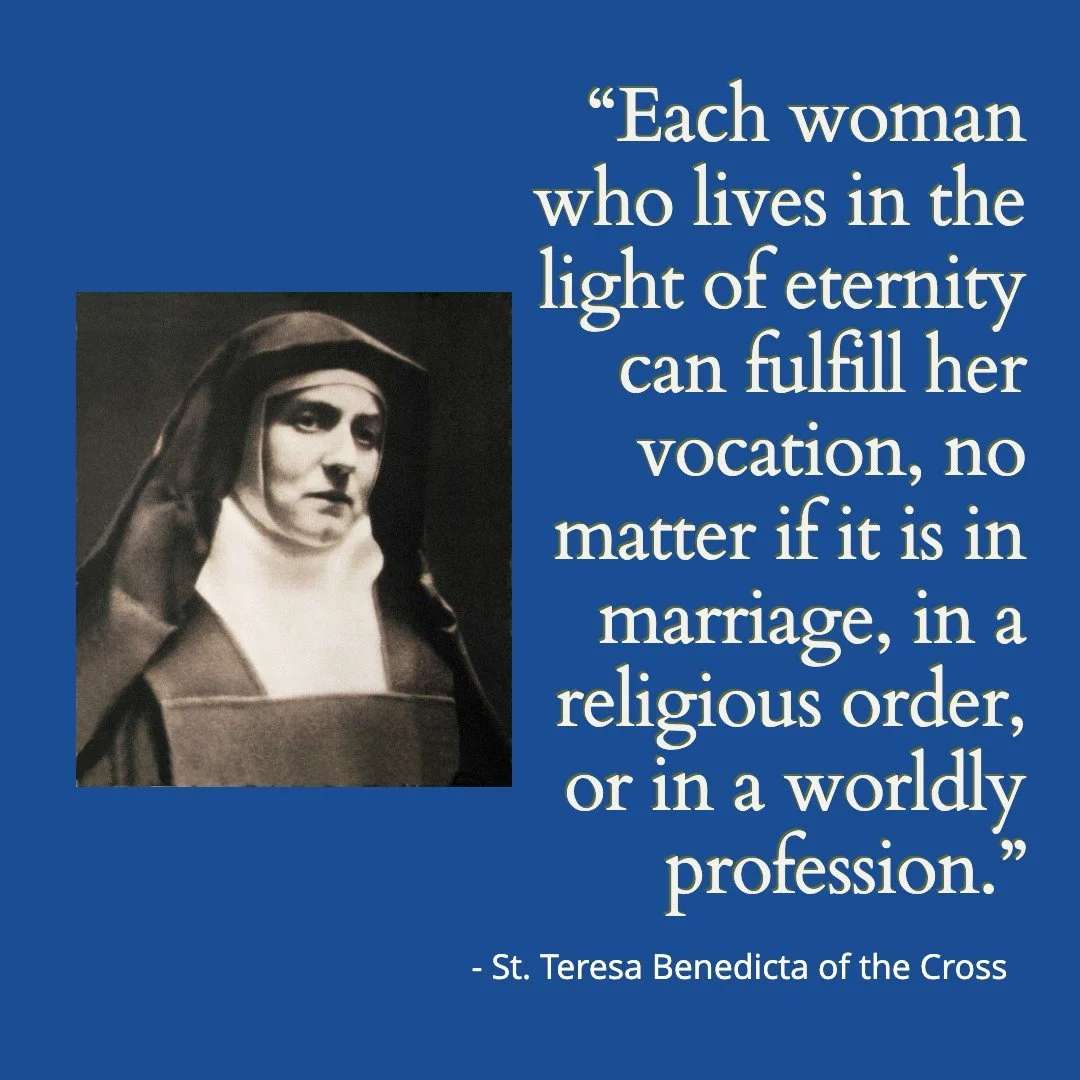The Extraordinary Life of Edith Stein
Friends, I’m so excited today to share the story of a woman who truly embodies courage, intellect, and an unwavering commitment to truth. Her feast day is coming up on August 9th, and honestly, not enough people know about the incredible life of Edith Stein, also known as St. Teresa Benedicta of the Cross. She’s one of the women I feature in my book, Important Catholic Women of the 20th Century, and for good reason!
When you look at her early life, there’s no way you’d imagine she’d become one of the most profound Catholic thinkers of the 20th century. Born in Germany in 1891, Edith was raised in an Orthodox Jewish family. She was a Jewish woman in a world dominated by men, especially in intellectual and academic circles. And she became an atheist as a teenager!
Her quest for truth, though, was relentless. Even during her atheist years (from 13 to 21), she was always seeking. This desire, my friends, was the seed of her eventual conversion to Christianity. She was brilliant, studying at the Universities of Breslau and Göttingen, and she became a research assistant for Professor Edmund Husserl, who showed her that objective truth can and does exist. This cracked open her atheistic worldview and led her to realize that religious experience was a valid area of study. Husserl’s philosophy started paving the way for her conversion to Catholicism.
After she finished her doctoral work in 1917, despite her impressive academic record, finding an academic position was incredibly tough. Germany’s economy was in shambles after WWI, and it was hard enough for men to find work, let alone a Jewish woman. So, she dabbled in feminist thought, joined the Social Democrats, and continued her search for meaning. And then, a pivotal moment: in 1921, she read the autobiography of Teresa of Avila. It hit her so hard that the very next day, she asked a priest about being baptized! On New Year’s Day, 1922, she officially became Catholic.
After her baptism, Edith felt called to become a Carmelite nun, but her spiritual director advised her to keep speaking, writing, and exploring philosophy. He helped her get a teaching job at a girls’ school. Later in 1932, she got a position at the German Institute for Educational Studies, right as Nazism and antisemitism were exploding. She realized that the Jewish people, and she along with them, would soon "receive Christ's cross." She was forced to resign her teaching position because of antisemitic laws. After much prayer, she finally entered the Carmelite order in 1934, taking the name Sr. Teresa Benedicta of the Cross, in honor of St. Teresa of Avila, who had so inspired her.
Life in the convent actually softened her. She learned, rather awkwardly, how to do simple housework, and found joy in obedience. Her superiors encouraged her to resume her intellectual work, and she wrote her masterpiece, Finite and Eternal Being, which wasn’t published until after her death in 1950 due to the intense political climate. She was sent to the Netherlands for safety, where she wrote The Science of the Cross, her final work.
Then, the Nazis invaded the Netherlands in 1940. While she was safe for a time in the convent, in 1942, Christian churches in the Netherlands protested the persecution of Jews. In retaliation, many non-Aryan Christians, including Sr. Teresa Benedicta and her sister Rosa (who had also become a Carmelite), were arrested. On August 2, 1942, the Gestapo took them from the convent. She was seen at Westerbork concentration camp and then sent to Auschwitz, where she was gassed to death on August 9, 1942.
Survivors later reported that she was incredibly calm and peaceful, helping others in the camp and on the train, knowing the horrific fate that awaited them. She was beatified in 1987 and canonized in 1998.
Scholars say she could have fled to the U.S. to escape the Nazis as a Jewish intellectual, but because she had taken a vow of obedience as Sr. Teresa Benedicta, she stayed. Her death truly was a sacrifice for her faith, a deep embrace of God’s will. She believed that becoming Catholic wasn't a rejection of her Jewish roots, but rather a fulfillment of them. Her last recorded words were to her sister, “Come, we are going for our people.” She saw her death as a sacrifice for the Jewish people, with whom she still strongly identified.
Sr. Teresa Benedicta offers us an incredible example of a “both/and” approach. She embraced her Jewish heritage and her Catholic beliefs. She shows us that the life of the mind can absolutely be the life of faith, when our intellectual gifts are used for God’s glory. Her story is a testament to the immense good that comes from passionately seeking truth, even when it means confronting our own deeply held beliefs.
More than anything, Sr. Teresa Benedicta's life demonstrates an unflinching willingness to face suffering and the redemptive power of embracing our crosses. She knew salvation comes through the cross, and that eternal good can come from extremely difficult situations. She spoke, wrote, and clung to her faith with boldness during a time when it would have been so tempting to hide her identity as both Jewish and Catholic. Instead, she embraced it all. Her martyrdom reminds us that God can take a situation designed to destroy and turn it into an instrument of salvation.
St. Teresa Benedicta of the Cross, pray for us!
